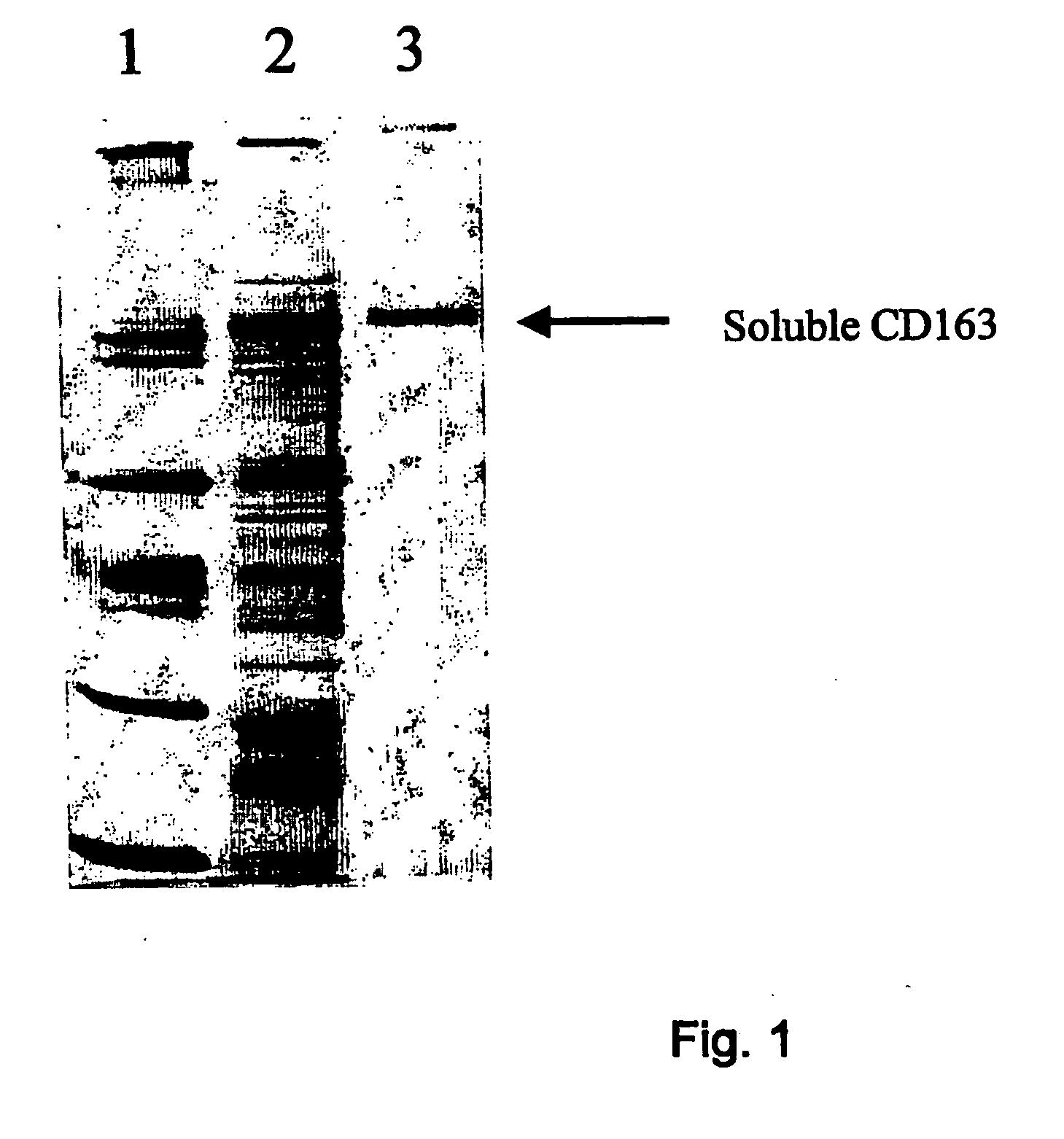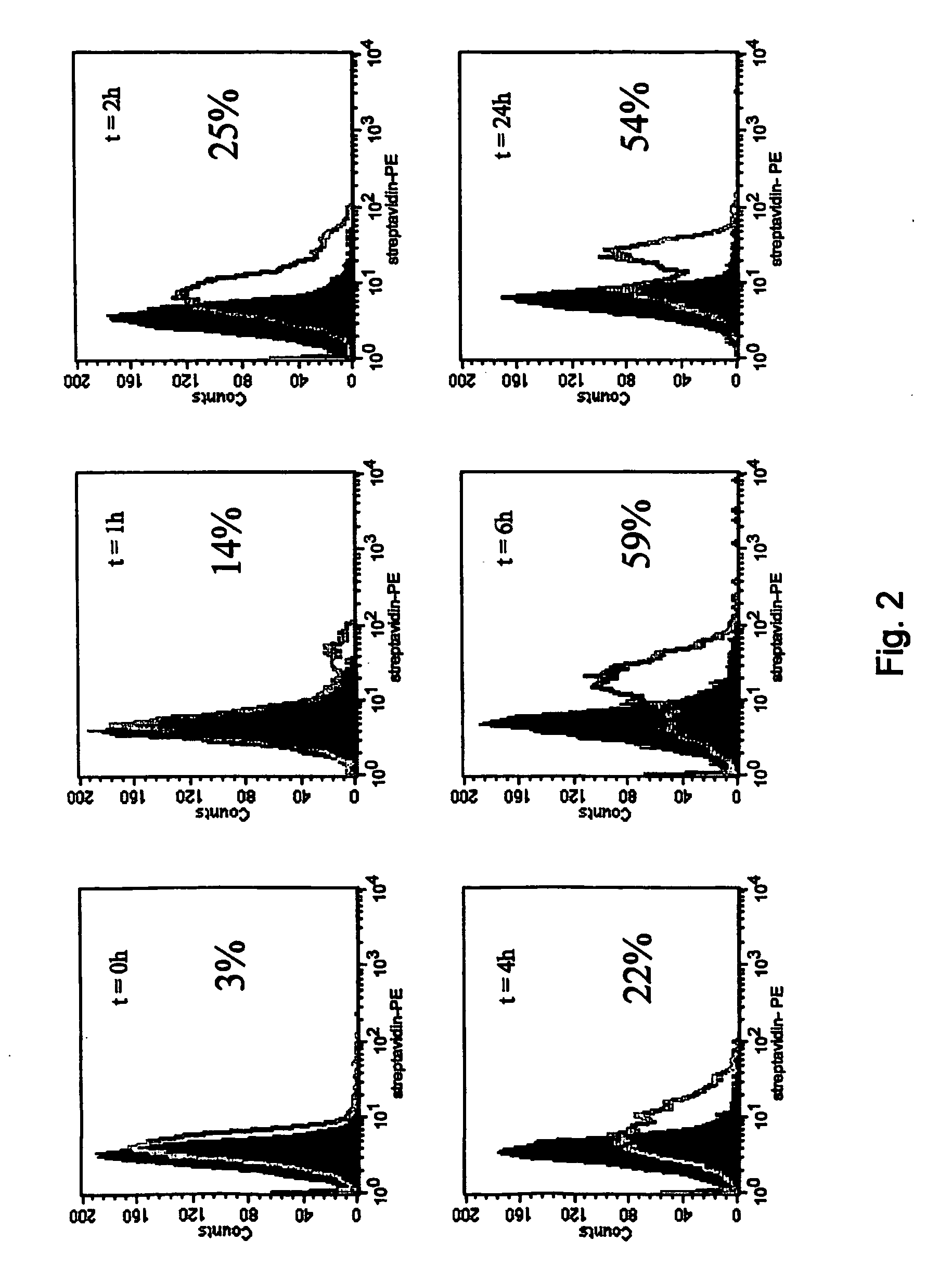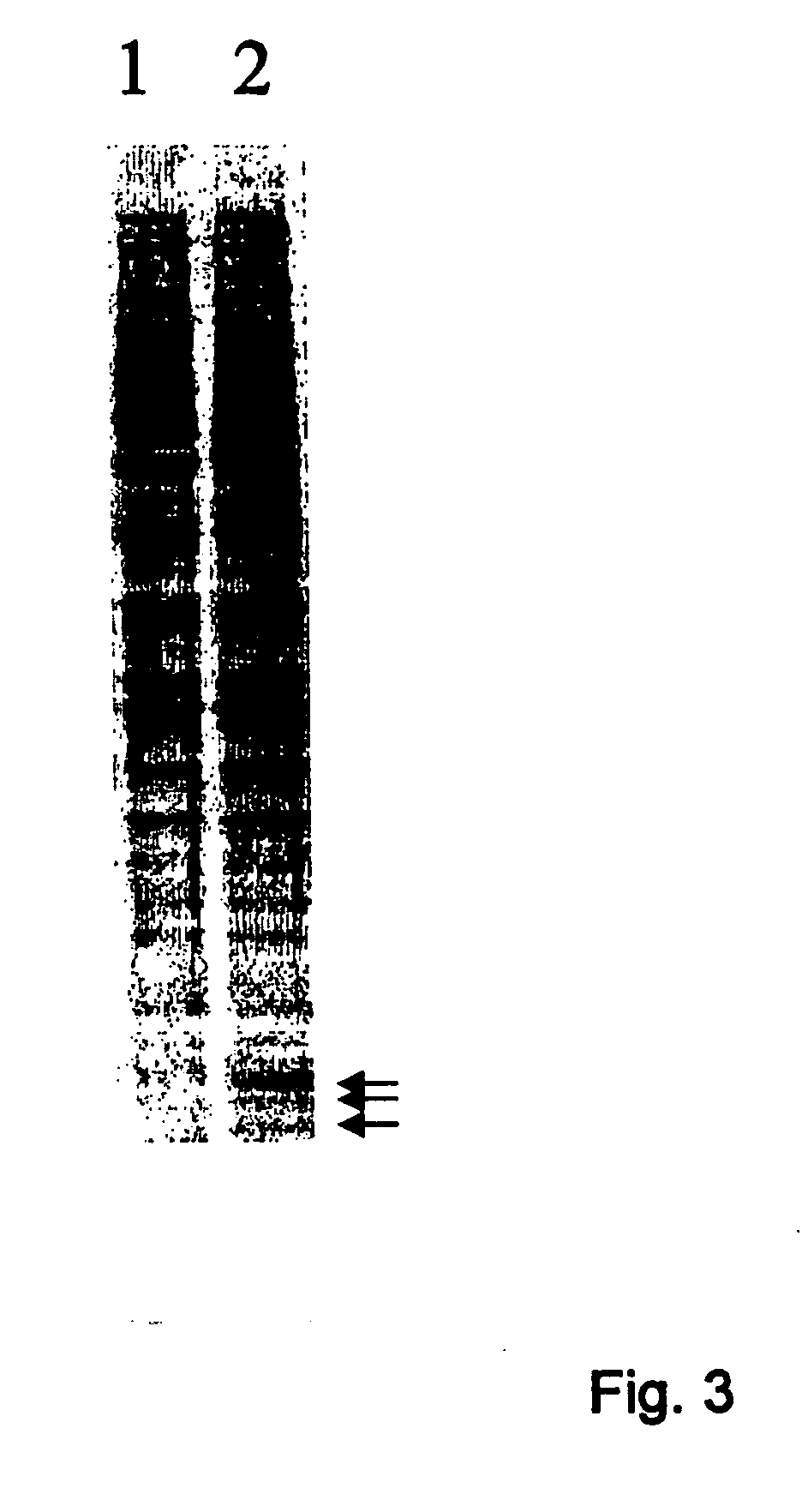Methods for using the CD163 pathway for modulating an immune response
a technology of immune response and cd163, applied in the field of biotechnology, can solve the problems of poorly understood pharmacological activities of immune system modulation, and achieve the effect of improving the sensitivity of immune response and reducing the risk of infection
- Summary
- Abstract
- Description
- Claims
- Application Information
AI Technical Summary
Benefits of technology
Problems solved by technology
Method used
Image
Examples
example 1
Identification of Putative CD163-Ligand Molecules Using (s)CD163.
Generation of sCD163 from Human Monocytes
[0099] To isolate sCD163, peripheral blood mononuclear cells (PBMC) were isolated from a buffy coat by density centrifugation on lymphoprep (Nycomed, Oslo, Norway), followed by three washes. This was followed by gradient centrifugation on Percoll (Pharmacia, Uppsala, Sweden) to isolate monocytes. The monocytes were resuspended in RPMI (BioWhittaker, Walkersville, Md.) supplemented with 5% human pool serum (BioWhittaker, Walkersville, Md.) and gentamycin and cultured for 72 hours in the presence of 200 nM dexamethasone (Sigma, St. Louis, Mo.) to enhance CD163 expression. Upon induction of cell surface CD163, shedding of CD163 was induced by washing the cells in serum-free PBS, resuspending them in PBS in the presence of 50 nM PMA (Sigma, St. Louis, Mo.). After a one-hour incubation at 37° C., supernatants were collected to measure sCD163 levels in SDS-PAGE and western blotting...
example 2
cDNA Cloning, Expression and Purification of Recombinant CD163-Ligand
[0111] Ligand molecules to human CD163, such as histones 2A (H2A, H2B, and H4), can be cloned using PCR primers based on known nucleotide sequences, or (partial) amino acid sequences of CD163-ligand molecules as described in Example 1. PCR reactions can be performed on mRNA derived from T-cells with known CD163-ligand expression, cloned into a plasmid vector, sequenced, amplified and expressed in several expression systems. Cloning and expression is carried out using standard techniques known to one of skill in the art. CD163-ligand molecules are expressed and purified by affinity purification using sCD163 or anti-CD163-ligand (e.g., anti-H2A, -H2B or -H4 mAb) Mabs or by conventional chromatography methods.
example 3
Generation of a Soluble CD163-Ligand and a CD163-Ligand-Fc Fusion Protein
[0112] CD163-ligand and / or fractions thereof, and / or a sCD163-ligand-Fc fusion protein, can be generated to be used as a therapeutic molecule. CD163-ligand or truncated versions thereof comprising the CD163-binding site are generated and expressed as described in Example 1. From these constructs, a highly soluble CD163-ligand (sCD163-ligand) that can be expressed at high levels is isolated. Further, the sCD163-ligand is expressed as fusion protein containing the extracellular part of the membrane molecules fused to the constant region of a human immunoglobulin, for example, of IgG4. Other isotypes, such as IgG1, IgG2a, IgG2b, and / or IgG3 may also be used for this purpose. For the cloning of the human CH4 / hinge-CH3 region, PCR primers are designed based on the sequence by Ellison et al. (Ellison et al. 1982). To allow successful linkage of this fragment to the extracellular domains (ED) of CD163-ligand, a small...
PUM
| Property | Measurement | Unit |
|---|---|---|
| Solubility (mass) | aaaaa | aaaaa |
| Nucleic acid sequence | aaaaa | aaaaa |
| Immunogenicity | aaaaa | aaaaa |
Abstract
Description
Claims
Application Information
 Login to View More
Login to View More - R&D
- Intellectual Property
- Life Sciences
- Materials
- Tech Scout
- Unparalleled Data Quality
- Higher Quality Content
- 60% Fewer Hallucinations
Browse by: Latest US Patents, China's latest patents, Technical Efficacy Thesaurus, Application Domain, Technology Topic, Popular Technical Reports.
© 2025 PatSnap. All rights reserved.Legal|Privacy policy|Modern Slavery Act Transparency Statement|Sitemap|About US| Contact US: help@patsnap.com



